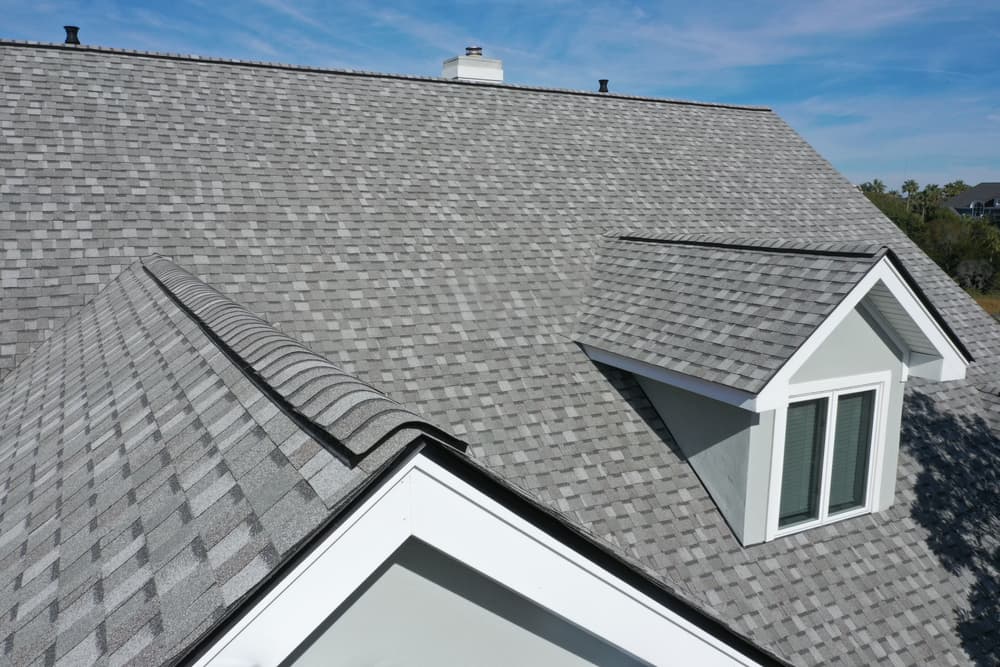Replacing a roof is a significant investment in one’s home. It is not just an essential barrier against the elements, but it also plays a pivotal role in the house’s overall aesthetics and energy efficiency. We take being a roofing company very seriously, and so we know a well-constructed roof protects against various weather conditions, enhances the home’s curb appeal, and contributes to maintaining a comfortable indoor climate. Therefore, the decision to replace a roofing system should be approached with careful consideration to ensure long-term benefits.
There are several factors to consider during the roof replacement process. Homeowners must evaluate the type of materials that best suit the climate in which they live. For instance, areas prone to heavy snowfall would benefit from a different roofing solution than those subject to high winds or intense sun. The roof’s architecture and the house’s structural integrity also influence the choice of roofing materials and design.
Additionally, it is essential to reflect on both the immediate and long-term costs associated with roof replacement. Upfront expenses include not only materials but also labor. However, investing in high-quality materials and professional installation can lead to savings in energy costs and prevent the need for frequent repairs. Understanding that roof replacement is a crucial element in preserving and enhancing the home’s value, homeowners should weigh these aspects carefully as they make decisions regarding their roof replacement project.
Essential Factors to Consider
When contemplating a roof replacement, it is crucial to assess several factors to ensure a durable and cost-effective outcome. Below are key aspects to consider:
#1 Material Choice: The selection of roofing materials greatly influences longevity and performance. Options include asphalt shingles, metal, clay tiles, and slate.
#2 Weather Conditions: A roof must withstand local weather patterns, from intense sun to heavy snow. Materials should be chosen accordingly for resilience.
#3 Roofing Contractor: Hiring a reputable and experienced contractor ensures quality installation. Verify credentials and past work.
#4 Cost: The budget must account for materials, labor, potential structural repairs, and unforeseen contingencies.
#5 Warranty: Seek materials and workmanship warranties to safeguard your investment.
#6 Timing: Plan the replacement during a season that minimizes weather-related delays and damage.
#7 Signs of Wear: Look for missing shingles, frequent leaks, and signs of rot or mold, which suggest a need for replacement.
#8 Local Building Codes: Compliance with regulations avoids legal issues and ensures structural integrity.
#9 Energy Efficiency: Consider materials that provide insulation and reflect sunlight to reduce energy costs.
#10 Roof Pitch: The slope affects water runoff and material suitability. Steeper roofs may have different requirements.
#11 Ventilation: Proper airflow prevents moisture accumulation and prolongs roof life.
#12 Aesthetics: Choose a style and color that complements the home’s exterior and neighborhood standards.
These considerations form the bedrock for a roof replacement that delivers safety, comfort, and value.
Choosing Your Roofing Material
When replacing a roof, the choice of material should balance longevity, cost, and energy efficiency.
Material Options and Their Lifespans
Roofing materials differ in durability and expected lifespan.
- Asphalt Shingles: Common and economical with a lifespan of 15-30 years.
- Metal Roofing: Durable and can last 40-70 years.
- Wood Shakes: Preferred for aesthetic; typically last 25-30 years.
- Clay or Concrete Tiles: Exceptionally durable with lifespans of 50-100 years.
- Slate: High-end option lasting 75-200 years.
Weighing Benefits Against Drawbacks
Each material presents unique advantages and limitations.
Asphalt Shingles
- Benefits: Cost-effective and easy to install.
- Drawbacks: Shorter lifespan and less resistant to extreme weather.
Metal Roofing
- Benefits: Long-lasting and recyclable.
- Drawbacks: Higher upfront cost and noise during rain or hail.
Wood Shakes
- Benefits: Natural look and can be energy efficient.
- Drawbacks: Requires maintenance against rot and insects.
Clay or Concrete Tiles
- Benefits: Fire-resistant and energy-efficient.
- Drawbacks: Heavy, requiring strong structural support.
Slate
- Benefits: Longest lifespan and enhances property value.
- Drawbacks: Very expensive and requires skilled installation.
Energy-Efficient Options
Energy efficiency is a critical consideration.
- Metal Roofing: Reflects solar heat, reducing cooling costs.
- Slate and Clay Tiles: Insulative properties keep buildings warmer in winter and cooler in summer.
- Asphalt Shingles: Some are coated for improved solar reflectance.
Selecting energy-efficient roofing can lead to cost savings over time and contribute to environmental sustainability.
Costs and Estimates Explained
When considering roof replacement, homeowners should be aware that costs can vary widely. An understanding of the financial requirement, knowledge of the factors that influence costs, and obtaining accurate estimates are crucial for budgeting for a roof replacement.
Understanding the Financial Outlay
The financial outlay for replacing a roof can be significant. Homeowners should expect different pricing according to materials and labor. The average cost for a roof replacement can range from between $6,700 and $80,000. Luxury materials and larger homes can drive prices higher.
Factors Influencing Total Costs
Several factors can impact the total cost of a roof replacement. They include:
- Size of Roof: Measured in roofing squares (100 square feet per square).
- Material Type: Asphalt shingles, metal, slate, tile, and others, each with varying costs.
- Roof Pitch: Steeper slopes require more safety measures and time.
- Complexity: The number of chimneys, skylights, and vents can complicate the job.
- Location: Regional labor rates and material costs vary by location.
- Removal of Old Roofing: Costs to remove and dispose of existing materials.
Navigating Estimates
Homeowners should obtain multiple estimates to compare. Estimates should be detailed and include:
- Material Costs: Price per square foot or square of roofing material.
- Labor Costs: Costs for installation labor.
- Additional Expenses: Such as permits or dumpster rental.
- Warranties: Details on manufacturer and workmanship warranties.
- Timeframe: Projected start and completion dates.
Estimates should be in writing and include a complete breakdown of costs for transparency. Homeowners should verify the credibility of the roofing contractor, including references and insurance.
Selecting Your Roofing Professional
Choosing the right roofing professional is critical to ensuring the job is done correctly, safely, and legally. Thorough background checks and verification of credentials are essential steps in this process.
Contractor Qualifications
When selecting a roofing contractor, one should consider their experience, reputation, and portfolio of completed projects. It’s necessary to look for a contractor with a substantial track record in roofing projects similar to yours.
- Experience: Contractors with more years in business often have a robust skill set for handling diverse roofing issues.
- Reputation: Reading online reviews and asking for references can provide insights into a contractor’s work quality and customer service.
- Portfolio: Request to see a gallery of past projects to assess the craftsmanship and variety of work the contractor has completed.
License and Insurance Verification
Verifying a contractor’s license and insurance is non-negotiable. Proper licensing ensures that the professional has met the industry and local municipality standards while insurance provides protection against liability and worker’s accidents.
- License: Check with your local state or province’s licensing board to confirm the contractor’s license is current and in good standing.
- Insurance: The contractor must have both liability insurance and workers’ compensation insurance.
| Type of Insurance | Why It’s Important |
| Liability Insurance | Protects your property from damage during the roofing process. |
| Workers’ Compensation Insurance | Covers injuries to workers while on your property. |
To ensure your roofing project will be completed proficiently and safely, investing time in selecting the right professional is essential. Remember, the contractor you choose will determine the success and durability of your roof for years to come.
Legal and Permit Considerations
When replacing a roof, it is essential to comprehend local building codes and secure the necessary permits. These ensure that the roofing project abides by municipal safety standards and regulations. Failure to adhere to these can result in legal penalties and increased costs.
Permits: Before beginning any work, homeowners should obtain a roofing permit from their local building department. This usually requires:
- A detailed description of the work to be performed
- The materials being used
- The name of the licensed contractor performing the work
Local Building Codes: These codes dictate the standards for construction and roofing within the jurisdiction. They cover aspects such as:
- Minimum slope requirements
- Acceptable roofing materials
- The number of layers permitted on a roof
Homeowners need to ensure that their contractor is familiar with these codes, which of course Pinnacle Home Improvements is.
Inspections: During and after the roof replacement, inspections might be required to:
- Verify that the work meets code requirements
- Ensure that the roofing project is progressing as per the permit
Non-compliance can lead to mandatory corrections at additional costs. Homeowners association rules may also apply and should be consulted if applicable.
In summary, legal and permit considerations are a critical component of roof replacement. Homeowners should prioritize securing permits and understanding local codes to ensure their project proceeds without legal complications.
Preparing for Roof Installation
Before a new roof can grace a home, homeowners must engage in key preparations, ensuring safety and efficiency. These preparations span from safeguarding the home’s interiors and exteriors to setting appropriate expectations for the duration of the roofing project.
Home and Landscape Preparations
- Interior Protection: Homeowners should safeguard their belongings inside the house from potential dust and debris. They ought to remove items from the attic and cover what remains with sheets or tarps.
- Exterior Protection: Fragile landscaping and lawn decorations near the house should be moved to a safe location or shielded adequately. Homeowners must ensure clear access by removing vehicles, bikes, and toys from driveways or pathways to guarantee smooth movement for workers and materials.
Expectations During the Replacement Process
- Noise and Duration: Residents should expect a considerable amount of noise throughout the project, which typically spans several days. Effective communication with the roofing contractor about the daily timeline can help manage expectations.
- Site Management: A professional roofing team will strive to minimize disruption, but homeowners will likely witness material drops and waste collection. These operations are integral to the replacement process and often involve dumpsters or trucks temporarily stationed near the property.
Regular Maintenance and Inspections
Regular maintenance and inspections are crucial in extending the lifespan of a roof. Homeowners should schedule inspections at least twice a year, typically in the spring and fall. This timing helps identify damage from winter storms and prepares the roof for potential summer heat damage.
Key Components for Inspection:
- Shingles: Check for cracks, buckling, or missing shingles.
- Gutters: Ensure gutters are free of debris and damage.
- Flashing: Examine the flashing around chimneys, vents, and skylights for warping or leaks.
- Attic: Look for signs of water intrusion or inadequate ventilation.
Maintenance Tips:
- Clear Debris: Remove leaves, branches, and other debris from the roof and gutters.
- Trim Overhanging Branches: This prevents damage and keeps rodents at bay.
- Replace Sealant: If the sealant around roof features is cracked or peeling, reapply as necessary.
- Tackle Mildew and Mold: Clean any mildew or mold growth with proper roof cleaners.
Proactive maintenance can prevent small issues from turning into costly repairs. Property owners are encouraged to keep a documented history of all inspections and repairs for future reference. They should also engage with professional roofing services for thorough inspections to ensure the roof remains in optimal condition year-round.
Contact Pinnacle Home Improvements for a Roof Replacement
If you’re considering a roof replacement, look no further than Pinnacle Home Improvements. Known for our exceptional service and quality workmanship, we have established itself as a trusted leader in home renovation and roofing services.
Our team of skilled professionals is committed to delivering top-notch results that not only meet but exceed your expectations. With a strong focus on customer satisfaction, Pinnacle ensures a seamless and hassle-free experience from start to finish. We use only the best materials and the latest techniques to ensure your new roof is both durable and aesthetically pleasing.
Don’t wait for a minor leak to turn into a major problem; contact Pinnacle Home Improvements today and take the first step towards a secure and beautiful new roof that will protect your home for years to come.








